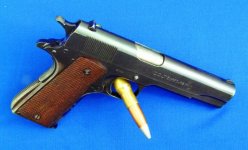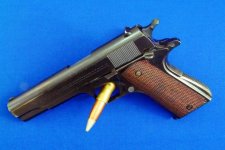DWalt
Member
"And yes, 9x23 can be run from a loosely chambered Super but HOT .38 Supers should not be run from a 9x23 because the .38 Super is a straight walled case and the 9x23 is a tapered case like the 9x19. It will cause Super brass to stretch at the head and eventually fail. "
Sez who? While my really hot loads (around 1500+ ft/sec) are all in 9x23 Win or 9x23 Starline SuperComp cases, I've fired no small number of hot reloads (around 1300-1350 ft/sec with 124 grain FMJ 9mm bullets using AA#5) in .38 Super brass, and never had anything close to a case failure. And I use .38 Super reloading dies for everything - both .38 Super and 9x23 brass, even though I also have a set of 9x23 Win dies. So basically, everything I fire is either a rimmed or rimless .38 Super. And I've been doing this since the mid-1990s. Regarding your first sentence, I would not use a 9x23 case in any .38 Super barrel with semi-rim headspacing, only a barrel with case mouth headspacing. As I earlier said, my .38 Super EAA Witness handles 9x23 loads like it was made for them. But the EAA .38 Super barrel headspaces on the case mouth.
Sez who? While my really hot loads (around 1500+ ft/sec) are all in 9x23 Win or 9x23 Starline SuperComp cases, I've fired no small number of hot reloads (around 1300-1350 ft/sec with 124 grain FMJ 9mm bullets using AA#5) in .38 Super brass, and never had anything close to a case failure. And I use .38 Super reloading dies for everything - both .38 Super and 9x23 brass, even though I also have a set of 9x23 Win dies. So basically, everything I fire is either a rimmed or rimless .38 Super. And I've been doing this since the mid-1990s. Regarding your first sentence, I would not use a 9x23 case in any .38 Super barrel with semi-rim headspacing, only a barrel with case mouth headspacing. As I earlier said, my .38 Super EAA Witness handles 9x23 loads like it was made for them. But the EAA .38 Super barrel headspaces on the case mouth.
Last edited:











